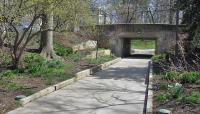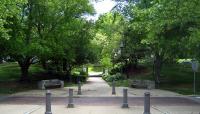Landscape Information
Located in Maryland just fifteen miles from Washington, D.C., Greenbelt was planned in 1935 by Rexford Guy Tugwell, director of the Resettlement Administration, with the goal of creating jobs and demonstrating the use of garden-city planning in projects for low-income residents, while simultaneously addressing the metropolitan area’s housing shortage. Along with Greenhills, Ohio, and Greendale, Wisconsin, Greenbelt is one of three cooperative communities built by the New Deal’s Resettlement Administration. It came about after much lobbying by the Regional Planning Association of America, founded by planner Clarence Stein in 1923. The town was designed by planner Hale Walker, architects Douglas Ellington and Reginald Wadsworth, and gardener Angus MacGregor, with consultation from Stein and Henry Wright.
The topography of the site organized the original design and construction. The center of the town is a small commercial district with a community center and school. The adjacent athletic field and recreation center are situated in a natural bowl. Surrounding this, a crescent -shaped ridgeline is the site of the housing, with apartment buildings forming the inner ring. The approximately 900 original homes, both row houses and apartments, are surrounded by a government-purchased "greenbelt." The original portions of Greenbelt were settled in 1937. In 1941 the Federal Government constructed 1000 frame houses along a connecting ridgeline to the north of the original site for workers engaged in the national defense effort. Greenbelt's internal walkway system and pedestrian underpasses separate pedestrian and vehicular traffic, inspired by the circulation systems at Radburn.












